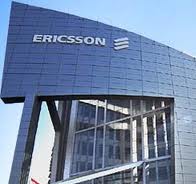  Ericsson said that it along with Mozilla and AT&T will demonstrate a Web Real-Time Communication (WebRTC) proof of concept at Mobile World Congress 2013.
The joint demonstration builds on Ericsson's Web Communication Gateway, the Mozilla Social API and WebRTC support in Firefox, and the AT&T API Platform to enable the Mozilla Firefox browser to sync with a user's existing phone number and provide calling services without any plugins to download.
The technology builds on WebRTC, an open Web framework that is being standardized by the World Wide Web Consortium (W3C), of which Ericsson, Mozilla and AT&T are all members among other leading technology companies.. This demonstration shows how the Web browser can perform many functions usually confined to a mobile device such as voice and video calls and SMS and MMS texting.
Integrating communications services with Web browsers allows consumers to easily shift between devices and locations. Additionally, the proposition will allow fast innovation to new and different applications and services, whether on a mobile device or desktop computer, through the global network of developers who work on the open Firefox platform.
Building on operator's APIs allows the demonstration, jointly developed at the AT&T Foundry as part of the company's commitment to innovation, to integrate seamlessly with a user's existing mobile number, which allows calls to originate from either the Firefox Web browser or the user's chosen device. Further, users can access their mobile services on the Firefox browser, including their personal address book.
Firefox is the Web browser of choice for hundreds of millions of people around the world. A global network of developers build on the open Firefox platform, and this demonstration enables those developers to create new WebRTC applications and services for mobile devices and desktop computers.
Todd Simpson, Mozilla Chief of Innovation, says: "We are excited to enable Web to mobile voice calls, video calls and file sharing without the need for a plugin. This gives developers and operators a lot of opportunity to offer compelling services while maintaining direct customer relationships, so users can have an awesome, consistent communications experience."
Carlton Hill, Vice President Developers Services, AT&T says: "AT&T opens our network to developers through our API platform, allowing them to create applications with AT&T services like SMS, MMS and call management seamlessly and easily integrated. Together with Mozilla and Ericsson, we've developed a concept that illuminates for developers and consumers the technologies made possible by our APIs."
Magnus Furustam, Vice President Product Area Core and IMS, Business Unit Networks, Ericsson, said: "We believe there is value for operators bundling mobile and fixed broadband offerings with browsers, and Firefox will be the first browser to give them this opportunity. The open source project with Mozilla means operators can contribute resources to the project and in a new way, jointly collaborating with other innovators to shape the future of web communications."
For Latest Updates Visit : http://www.facebook.com/pages/TelecomTiger/429104257149437 |